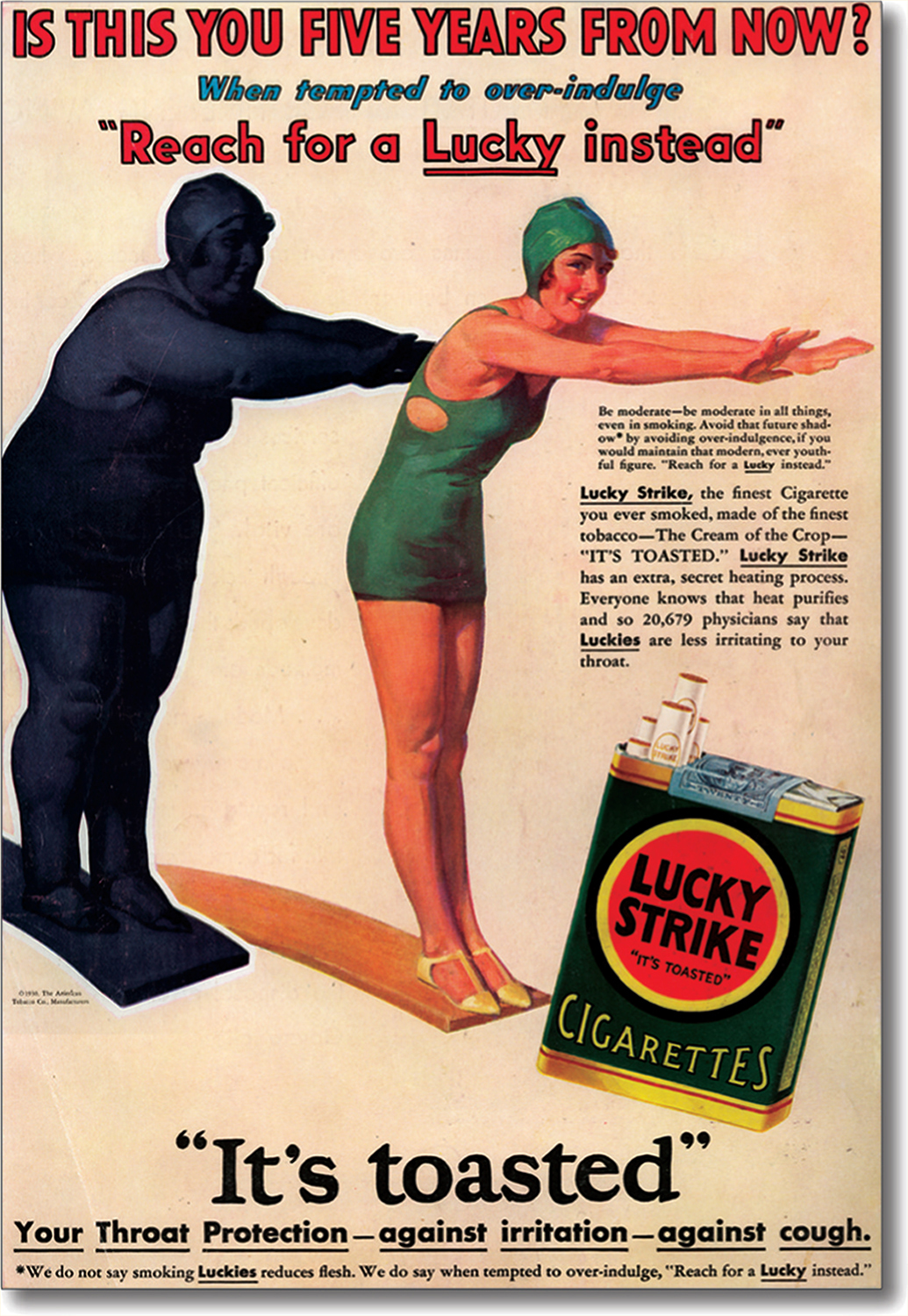Visualizing History: “Advertising in a Consumer Age”
Just as American business changed dramatically from the 1880s to the 1920s, so, too, did advertising. Businesses in the New Era continued to promote their products, of course, but they sought to attract customers in very different ways. Here are two images that illustrate the changes.
Look at the Estey Organ Company advertisement from 1885. First and foremost, the ad features the company’s huge industrial complex—
The men who presided over Estey’s impressive manufacturing operation—

Based on this advertisement, what did the Estey Organ Company believe was its most important selling factor? What other factors were important?

By the 1920s, companies employed advertising specialists who created ads that would appeal to the consumer’s anxieties and personal needs. The ads were even designed to stimulate needs that didn’t yet exist. As a result, advertisements changed dramatically.
In this 1929 advertisement for Lucky Strike cigarettes, the factory and its owners are nowhere to be found. Instead, it offers a woman in a bathing suit. What does she have to do with cigarettes? Millions of Americans smoked billions of cigarettes in the 1920s. In countless tobacco advertisements, smoking promised instant maturity, sophistication, and worldliness. What is this ad’s promise to smokers?
Look at the various elements of the ad—
Before the 1920s, advertising often focused on production. Even small businesses presented themselves as powerful and efficient producers of consumer goods such as organs, furniture, and stoves. In the consumer society of the 1920s, companies sought to teach Americans to judge themselves and others by what they bought, rather than by what they produced.
SOURCE: Organ ad: The Pease Collection of Historical Instruments; Lucky Strike ad: Picture Research Consultants & Archives.
Questions for Analysis
- Why do you think the size of the factory was featured so prominently in the 1885 Estey Organ advertisement?
- To whom is the 1929 Lucky Strike advertisement appealing?
- How might an ad for Lucky Strike have looked if it had been done in 1885?
- What might an Estey Organ Company ad have looked like in the 1920s?
Connect to the Big Idea
How did the rise of mass production translate into the rise of mass consumption and mass culture?